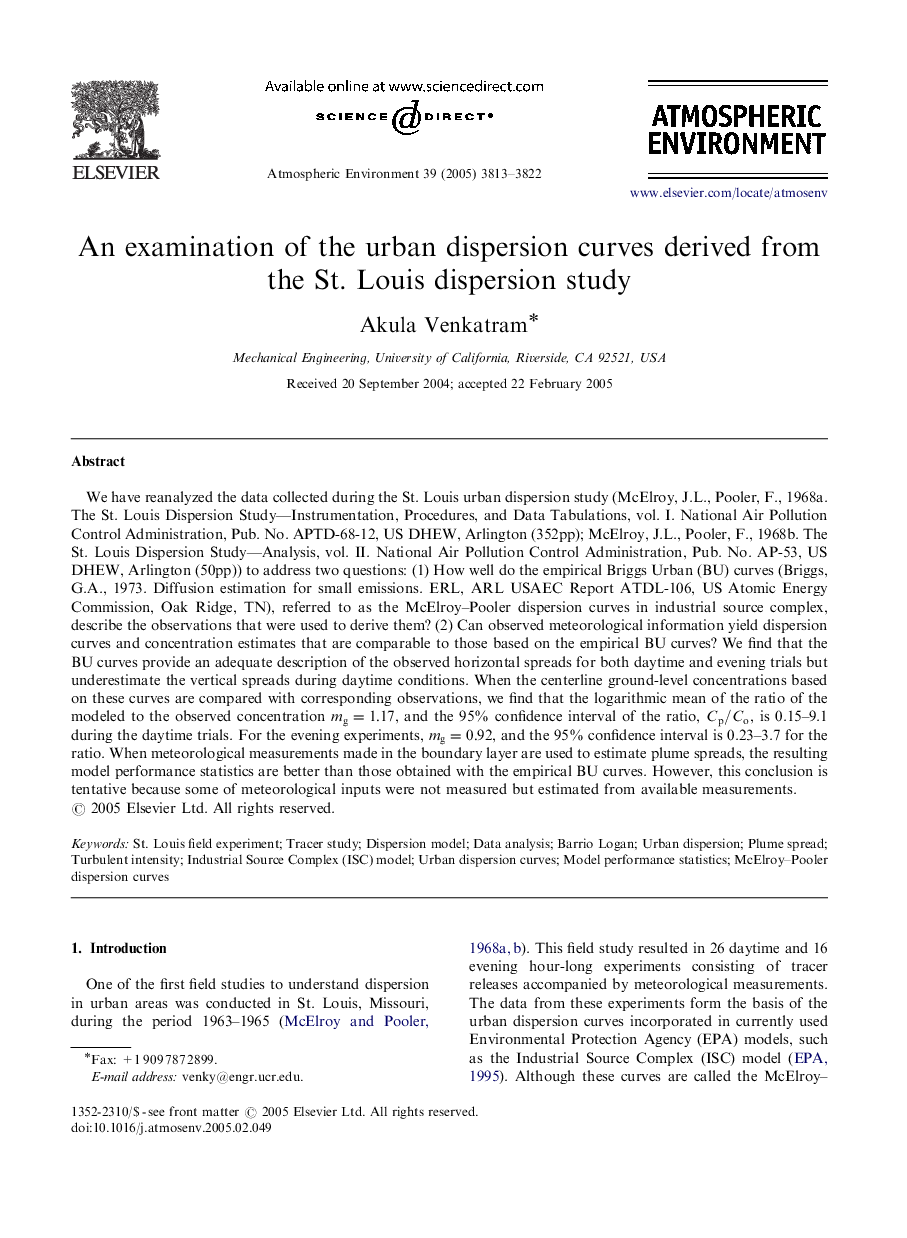| کد مقاله | کد نشریه | سال انتشار | مقاله انگلیسی | نسخه تمام متن |
|---|---|---|---|---|
| 4445356 | 1311283 | 2005 | 10 صفحه PDF | دانلود رایگان |

We have reanalyzed the data collected during the St. Louis urban dispersion study (McElroy, J.L., Pooler, F., 1968a. The St. Louis Dispersion Study—Instrumentation, Procedures, and Data Tabulations, vol. I. National Air Pollution Control Administration, Pub. No. APTD-68-12, US DHEW, Arlington (352pp); McElroy, J.L., Pooler, F., 1968b. The St. Louis Dispersion Study—Analysis, vol. II. National Air Pollution Control Administration, Pub. No. AP-53, US DHEW, Arlington (50pp)) to address two questions: (1) How well do the empirical Briggs Urban (BU) curves (Briggs, G.A., 1973. Diffusion estimation for small emissions. ERL, ARL USAEC Report ATDL-106, US Atomic Energy Commission, Oak Ridge, TN), referred to as the McElroy–Pooler dispersion curves in industrial source complex, describe the observations that were used to derive them? (2) Can observed meteorological information yield dispersion curves and concentration estimates that are comparable to those based on the empirical BU curves? We find that the BU curves provide an adequate description of the observed horizontal spreads for both daytime and evening trials but underestimate the vertical spreads during daytime conditions. When the centerline ground-level concentrations based on these curves are compared with corresponding observations, we find that the logarithmic mean of the ratio of the modeled to the observed concentration mg=1.17mg=1.17, and the 95% confidence interval of the ratio, Cp/CoCp/Co, is 0.15–9.1 during the daytime trials. For the evening experiments, mg=0.92mg=0.92, and the 95% confidence interval is 0.23–3.7 for the ratio. When meteorological measurements made in the boundary layer are used to estimate plume spreads, the resulting model performance statistics are better than those obtained with the empirical BU curves. However, this conclusion is tentative because some of meteorological inputs were not measured but estimated from available measurements.
Journal: Atmospheric Environment - Volume 39, Issue 21, July 2005, Pages 3813–3822